For years, I have been wanting, desperately, to visit the Asian continent. Unfortunately, I haven’t yet gotten my chance to experience life on the other side of the world. But when I do get there, I know that my very first stops is going to be South Korea.
This interview with JinJoo from Kimchimari.com taught me so much about South Korea. Particularly, it taught me how the country has changed over the course of one lifetime.
JinJoo, a Korean food blogger, was born and raised in South Korea. She now lives in the United States and uses her food blog as a platform to teach her daughter and the world about the beauty of making Korean food at home.
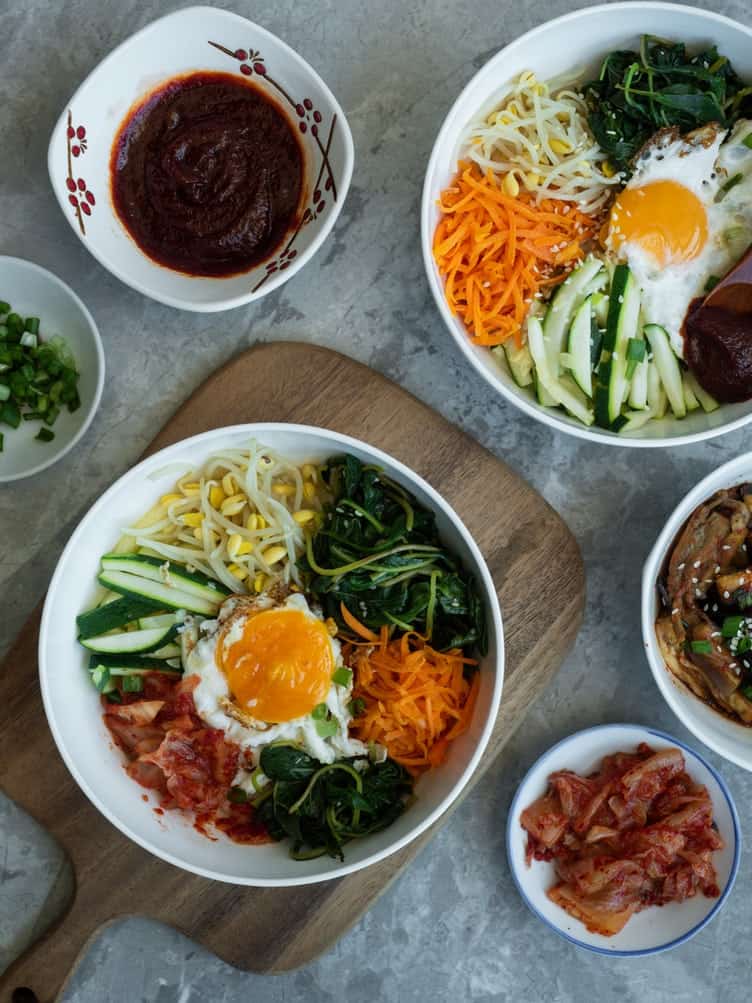
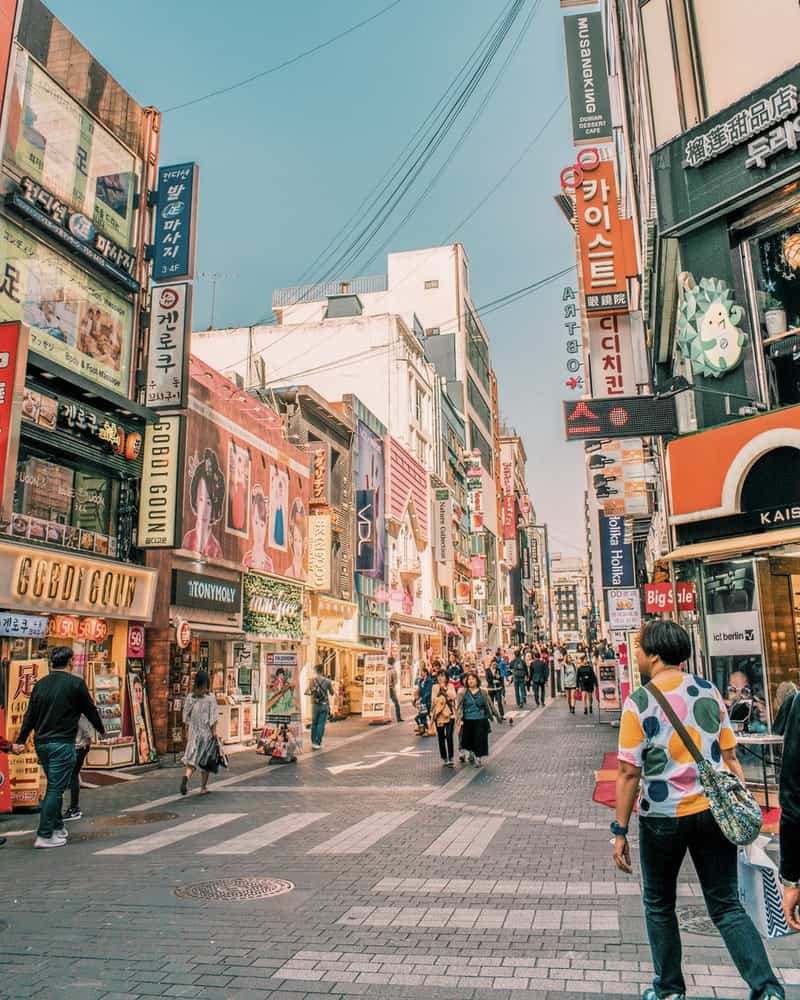
Did you grow up in South Korea? Do you live there now? If so, what was growing up in South Korea like?
Yes, I was born and raised in South Korea until I graduated from college. I did live outside of Korea twice: Once in Tunisia for 1 ½ years when I was in kindergarten, and once in New Delhi, India for 4 ½ years from 5th-9th grade. After college, I moved to the US for grad school. I got married and have been living here for almost 30 years.
Growing up in Korea was a lot of fun with lots of relatives and visitors at the house all the time. This also meant there was a lot of cooking to serve guests. Especially because my father was a diplomat, we had many formal dinner parties for foreign diplomats living in Korea.
This meant a lot of fabulous food being made in the kitchen and being served. I kind of grew up in the kitchen watching all of this, helping out a lot and, of course, sampling a lot of good food (and getting fat.. hahaha).
School was fun until I got to high school and I had to study non-stop, all day. I studied 15 subjects for the college entrance exam so I could go to a good college.
I mean, we still managed to have fun in the midst of all of that, and I have great memories. But also remember wanting it to be all over and be FREE once I got into college.
In terms of being a high school student trying to get into college, not much has changed since then. But Korea overall has changed totally.
Koreans are a lot more westernized with almost total freedom to express themselves and enjoy all the goods that the world has to offer. You can find the most expensive luxurious things from all over the world in Korea now.
In terms of food, younger Koreans actually eat more bread, pizza and hamburgers than rice these days. But at the same time, there are young people who appreciate Korean traditional culture even more and do a lot with it.

How is South Korean food different in the United States than it is in Korea?
In the US we have limited access to the wide variety of fresh seafood and other vegetable ingredients that are available in Korea, so the Korean dishes that people are able to cook in the US are somewhat limited. The dishes are also less spicy in general in the US and are more meat-centered as meat in the US is cheaper than in Korea.
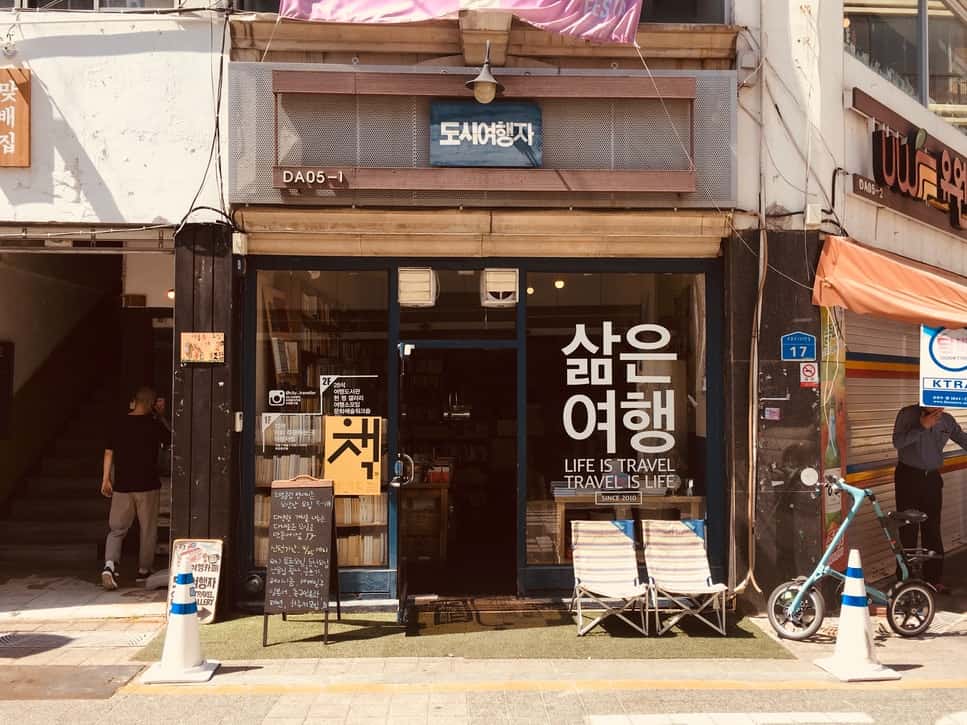
Do you know much about food in North Korea?
Oh yes. My parents are originally from North Korea. They fled down to South Korea during the war.
I grew up eating a lot of North Korean food and my cooking today is still somewhat influenced by that. I tend to make my foods not as spicy and salty as some of the foods in the more southern region of South Korea like Jeolla and Gyeongsang provinces.
North Korean food is very mildly seasoned overall compared to South Korean food. Beef and pork broth is more used and can be fattier (as you need fat to survive the colder winters). But you need to know that even among South Korean food, there’s a difference.
North Korean food and foods from the region near Seoul (closer to DMZ) are more similar than the more southern provinces and provinces near the sea. The more south you go, much like in any country, foods get spicier and saltier. Probably due to the fact that saltier foods keep longer in hot weather. Also, humans tend to crave more salt and spice when the weather is hotter as we lose salt through our sweat.
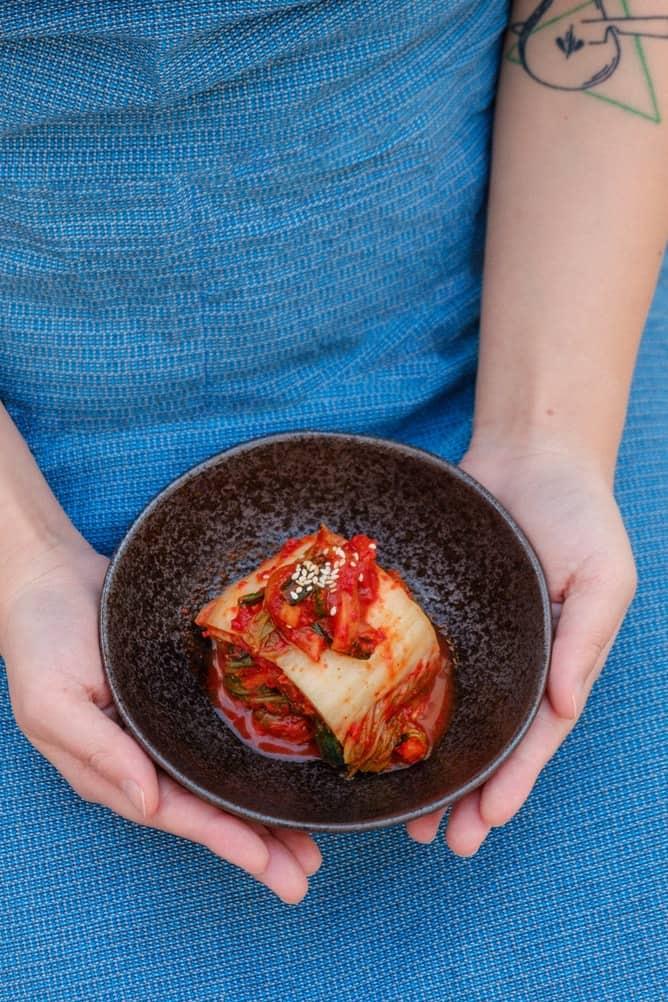
Tell me about Kimchi. What is it and how do you like to enjoy it?
Kimchi.. wow it’s such amazing food. Kimchi is Korean pickles that are almost always served in a meal. All different kinds of vegetables are first pickled in brine for a few hours. Then they’re fermented with seasoning paste over time.
Kimchi is usually spicy but not always. It has such an amazing complex taste of spicy, salty, sometimes sour, zingy and umami that’s really hard to describe in words. I think there’s really nothing like it on this earth… yes, I may be a bit biased.. haha..
Not only does it go with just about any type of dish, but it is so versatile. It’s wonderful fresh but also can be made into a stew, made into a pancake, cooked with rice, or add a punch of flavor to dumplings, meatballs and even to roasted Brussels sprouts.
Us Koreans can’t go too long without eating Kimchi. Whenever people travel, after few days, Koreans start craving Kimchi. I wrote a whole post about it if you want to read more.
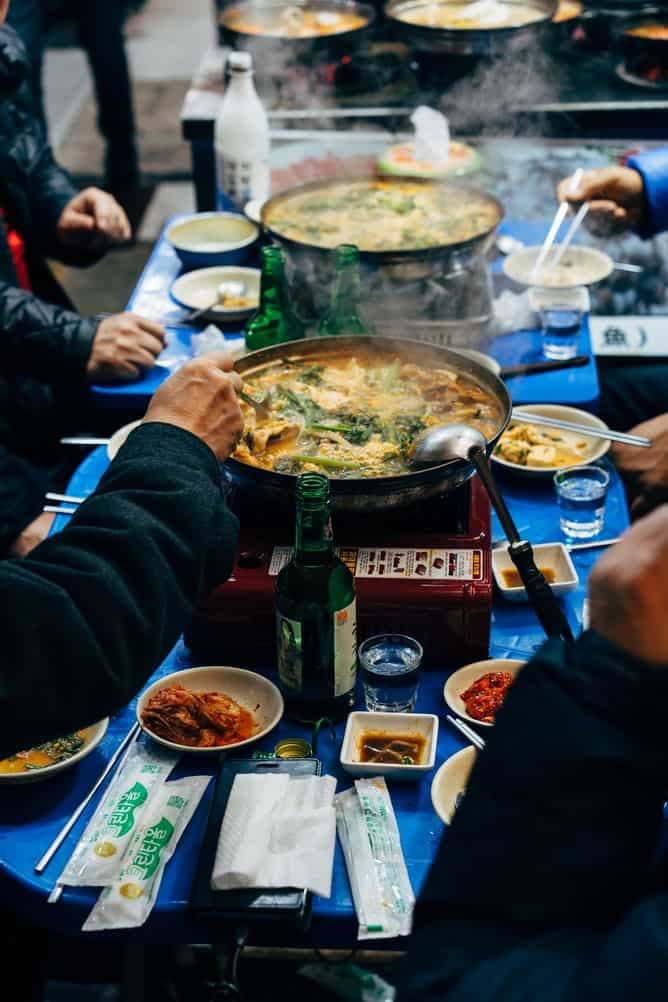
Tell me about the food in South Korea.
Food in South Korea is very diverse in terms of ingredients used. The difference in flavors is due to region and weather.
Because Korea is surrounded by the sea on 3 sides, there’s an unbelievable amount of seafood that’s used in Korean cooking. Koreans are also a master at preserving foods – we ferment or dry ingredients for longer storage. These methods also add great complex flavors and texture. Koreans ferment not just vegetables for kimchi, we also ferment seafood like squid, oysters, clams and more.
In Korean food, there’s a whole category of dishes called namul. This refers to an array of vegetables like squash, radish, cabbage and leafy greens like Perilla. These are often dried then reconstituted then lightly cooked and seasoned. This process gives each plant a whole different texture, much like how dried mushrooms are.
Koreans mostly eat pork, beef and chicken – sometimes duck or pheasant but other than that, not very adventurous there.
Some staple Korean vegetables are napa cabbage, radish, squash, potatoes and eggplant. Then there’s a whole set of unusual mountain herbs and leafy greens that Koreans love.
The most important spice in Korean cooking is Korean red chili pepper. Its powder is used to make Kimchi and gochujang. Korean chili peppers are not just spicy – actually, the common Put Gochu is around 1500 SHU and is somewhere between a Serrano and Jalapeno pepper – but is very flavorful, very slightly sweet and just works best for Kimchi.
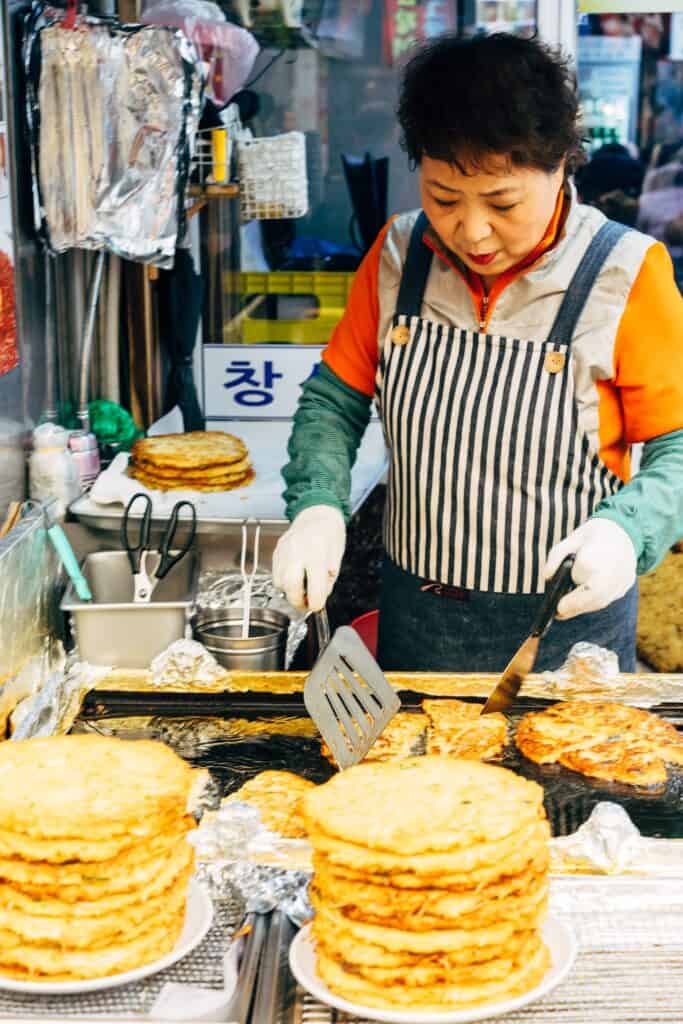
How has the history of South Korea affected the foods eaten there today?
Wheat was not something natively grown in Korea and the majority of the flour that Koreans use is still imported. Flour was imported and introduced late in Korean history and dumplings and noodles made with flour were considered a fancy dish only the royals could eat.
The dramatic change happened when, after the Korean war (1953), the US sent their surplus flour to Korea – as an aid I believe because there was not enough rice to feed the whole country. I remember when I was in elementary school, the Korean government made Wednesday a mandatory day where we bring sandwiches or bread to school lunch instead of rice. And we were even told to mix rice with at least 30% barley so everyone could eat rice.
That shortage started Koreans’ love for bread and noodles. Today, I believe Koreans eat more flour-based foods than ever and are having to deal with surplus rice as the younger generation often likes to eat more foods made from flour than rice.
What are your everyday South Korean foods? What types of things are common for breakfasts, dinners, snacks?
A typical Korean meal is mainly made up of rice, soup or stew, a main dish, and a few side dishes. Traditionally this was eaten 3 times a day. But in modern times, Koreans started to eat pastries or toast for breakfast rather than rice.
Lunch is usually a simpler Korean meal which can often be a noodle soup, rice and soup.
Snacks.. oh, Koreans love snacks and street food, and there is something new every year. The classic ones are roasted sweet potatoes, puffed corn, Dalgona candy (sponge candy), and Hotteok (a sweet pancake filled with cinnamon sugar syrup)
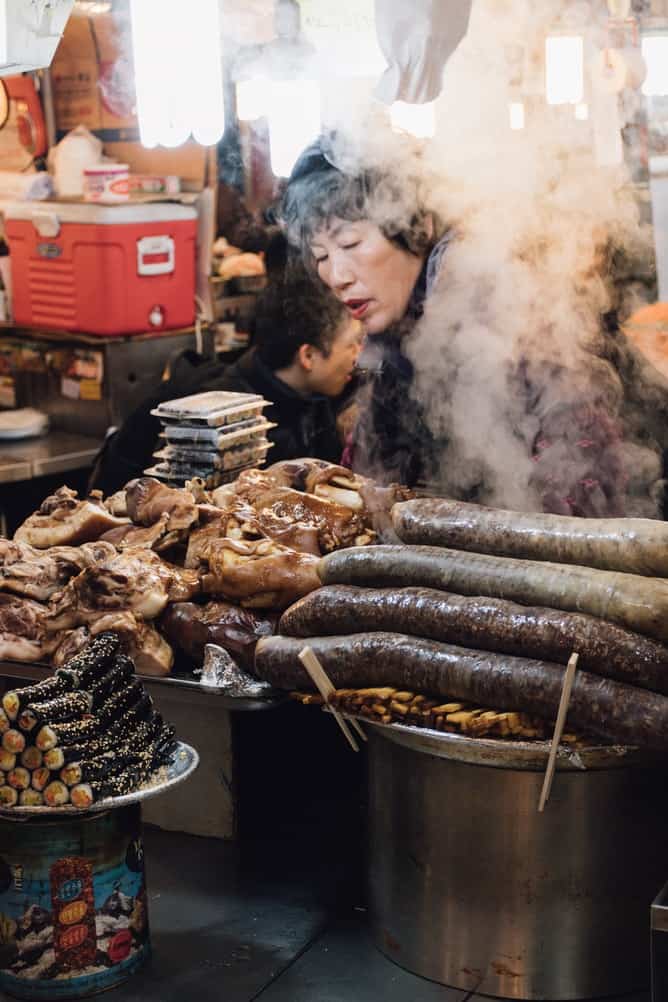
Is there anything eaten in South Korea that’s not eaten anywhere else in the world?
Oh.. there’s probably too many… cooked silkworm larvae is a favorite snack item that was sold on the streets when I was little. It’s hard to find that any more these days. I have never been able to eat it but people swear it’s yummy.
Fermented skate (hongeo 홍어) is a delicacy that people either love or hate due to its pungent smell. The smell is so strong, it actually comes out through your nose as you eat it!! The traditional way is to wrap the fermented skate with really aged kimchi and pork belly. I wasn’t a fan at first but I once had it with Korean spicy ramen and OMG it was to die for!!
Besides these ‘weird’ foods, Korean cuisine includes a vast amount of wild greens originally foraged from the mountains and also collected from the sea. Although I cannot say with 100% certainty, I’m sure many of the wild greens are eaten only by Koreans. Fiscer’s Ligularia (Gomchwi 곰취) is one example.
Then, there are common parts of the vegetable that not many people eat. Koreans love to eat the radish tops, sweet potato shoots and make namul even from the leaves of the green chili pepper plant. I especially love the chili pepper leaves. Anyway, I could write a whole page about it but will end it here.
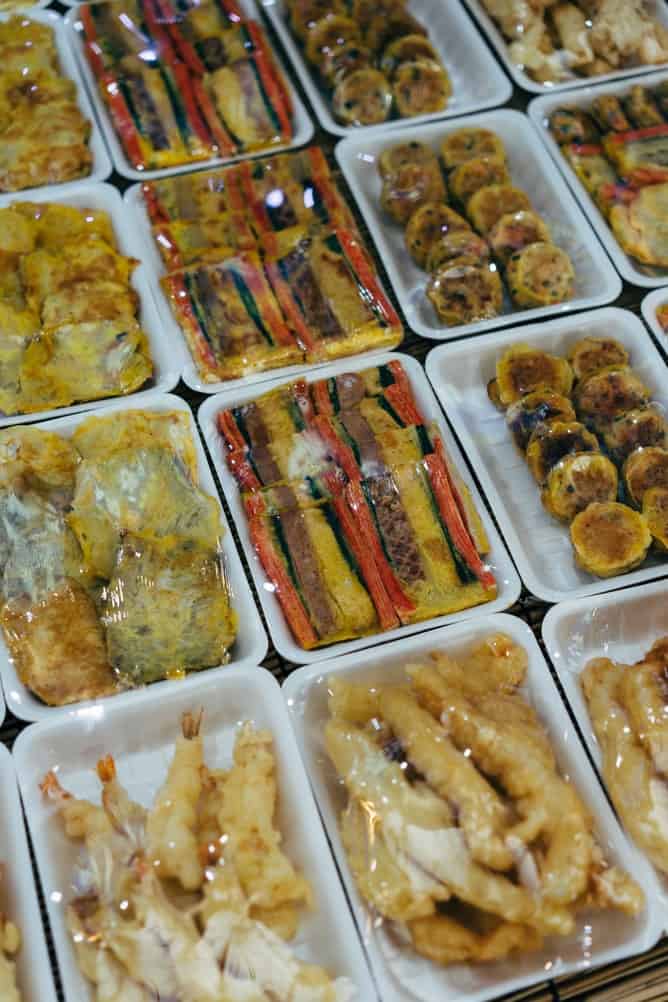
What’s your very favorite recipe from South Korea? What is your least favorite food that is traditionally Korean?
My most favorite recipe is probably Korean Kalbi/Galbi (BBQ short ribs) and Kimchi. Any kind fo Kimchi. Hmm.. was that two? Sorry, I can’t just choose one 😉
My least favorite food is Yukhoe 육회 (beef tartar). I just don’t like to even look at it.. haha.
Are there any ingredients that you love that just aren’t the same unless you’re in South Korea?
Oh.. probably a lot of seafood like abalone and belt fish are just not the same. Because the sea gets quite cold in winter in Korea, the fish have a lot more fat and flavor which I love.
Some common vegetables like squash, cucumbers, radish and cabbage are also just not the same. Korean cucumbers are crunchier, juicier but also firmer – making it ideal for kimchi.

Tell me about your food blog! Why you started it, what it features, etc.
I started my blog when my only daughter went off to college in 2010 in order to share recipes with her so she could cook on her own. I also wanted to teach other kids like her who never got to learn to cook while they were home.
As I sent her off, I realized that she and many other kids like her spent so much time on school and extracurricular activities that they never got to really learn the other important stuff like how to cook your own family food whether it’s Korean, American or whatever. So this was out of that need and also the need for a life change as I was also going through a sort of a mid-life and an empty nest crisis.
So with that in mind, I try to write recipes without assuming the reader had any background in Korean cooking or actually even in just basic cooking. I also think it’s hard to know ‘how things are supposed to be’ when you have never even seen someone cook the food. Thus, my blog motto is “Authentic Korean Recipes that ANYONE can cook”.
My most favorite recipe is my Bulgogi recipe which was also my very first post on the blog. I have been using this recipe for almost 30 years now and I have not found a better-tasting one.
Tell me about your new website!
I just launched my newly designed website on Monday. It’s a culmination of my years of blogging (can’t believe I’m on my 10th year!!) and I wanted to create a space where people of all different Korean cooking knowledge could come browse, learn and find what they need.
I have a separate Guide section where I have a collection of all my How-To posts about the basics of Korean cooking including how to set up a basic Korean pantry, buy and use the right ingredients and more. Also, I plan to add a whole Korean cooking ingredient glossary where my dream is to have all the ingredients that are used in Korean cooking that people can learn about, use and find substitutions.
Some of my favorite posts are How to Ripen Kimchi (has a flowchart), Know your Korean Beef Cut vs US, and All About Measuring Cups – Korean vs US. Koreans actually have a different measuring cup size (180ml is 1 cup).
Did you like this article? If so, you may enjoy these other articles on my website as well:


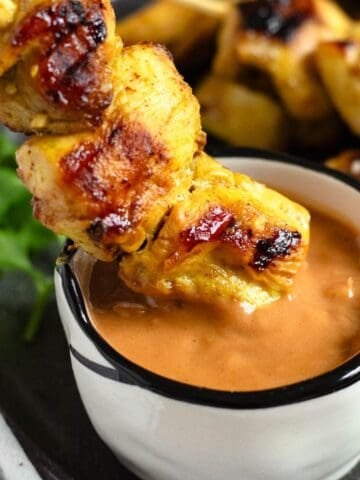



Leave a Reply